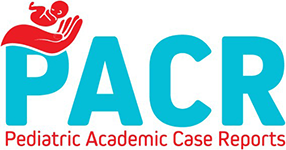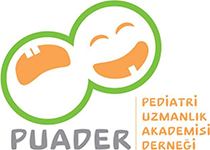Thrombotic Microangiopathy-A Diagnostic Dilemma
Madhukar Rainbow Children's Hospital, Division Of Pediatric Nephrology Department Of Pediatrics, New Delhi, India
Keywords: Thrombotic Microangiopathy, Autoimmune Hemolytic anemia, Anti-factor H antibodies, Antinuclear antibodies, ADAMTS13
Abstract
In India, approximately 50% of thrombotic microangiopathy (TMA) cases are caused by antibodies against Factor H complement. We describe a child who initially presented with features of autoimmune hemolytic anemia and later during the follow up evolved into full-blown TMA. While evaluation, he had antibodies against complement factor H and sub-endothelial deposits on electron microscopy of kidney biopsy, which in the presence of antinuclear antibodies and low complement C3 and C4 suggests an underlying lupus like disease. He also had low levels of ADAMTS13 levels. Thus, clearly more than one underlying etiology of TMA contribute to his disease.
Introduction
Thrombotic Microangiopathy (TMA) is a clinic-pathological entity that presents as microangiopathic hemolytic anemia (MAHA), thrombocytopenia and ischemic organ injury (most commonly, kidneys are affected, but central nervous system, gastrointestinal tract, cardiovascular and respiratory system can also be involved). In pediatric age group causes of TMA are diverse ranging from genetic deficiencies of complement factors to infectious diseases. As our understanding of molecular mechanisms causing TMA is increasing, we understand that mechanisms contributing to TMA can overlap(1). Systemic findings of TMA (MAHA and low platelets) are not always needed for the diagnosis of TMA and renal-limited TMA is a well-known entity that occurs in association with glomerulonephritis, solid organ transplant, antibodies-mediated rejection and drug-induced TMA(2). The main cause of TMA in children is Shiga toxin-induced hemolytic uremic syndrome (STEC-HUS), followed by complement-mediated TMA (CM-TMA) and sepsis. Clinician should be aware of the causes of TMA as systematic evaluation and treatment determines the clinical outcome in most cases. Our patient had presented with clinical syndrome of rapidly progressive glomerulonephritis and on evaluation he was diagnosed to have TMA with more than one underlying etiology.
Case Report
11-year-old male child presented with recurrent anaemia and new-onset acute kidney injury. Previously, healthy child who was immunised for age as per national immunisation schedule presented with increasing pallor in June 2023 in a referral hospital where he had microangiopathic hemolytic anemia (High reticulocyte count, Schistocytes on peripheral smear) with severe thrombocytopenia with normal kidney and liver function except for high indirect bilirubin, On further evaluation his Direct coomb`s test (DCT), Antinuclear antibody (ANA )titre was positive (1:320). However, he was negative for double-stranded DNA antibody (Anti Ds-DNA) and anti-smith (anti-sm) antibodies, so the provisional diagnosis of autoimmune hemolytic anemia was made. Child was treated with injectable Methylprednisolone for five days. With steroids alone, he showed improvement in clinical and laboratory parameters. The patient remained in follow up with same hospital and received tapering doses of prednisolone.
After six months, patient had increasing pallor, oliguria, abdominal pain and vomiting for two days, after initial stabilisation was referred to our hospital. During the initial evaluation, he had cushingoid features along with hypertension. Laboratory evaluation was suggestive of anemia (Hemoglobin–7g/dl), thrombocytopenia (20000/mm3), high reticulocyte count (3.9%), positive DCT, AKI (Serum creatinine-3.9mg/dL), oliguria (sterile urine, showing blood ++++, non-nephrotic proteinuria). In view of previous reports of antinuclear antibody (ANA) positivity with active urinary sediment along with AKI, a provisional diagnosis of Lupus Nephritis was made. Along with intermittent hemodialysis, patient was started on injectable Methylprednisolone for five days (30mg/kg/day), but there was no clinical or hematological improvement noted. Later intravenous immunoglobulin was administered at 2gm/kg over two days, resulting in hematological recovery, but still there was no renal function improvement. On continued evaluation, child had low complements (C3 &C4) level, low ADAMTS13 (A disintegrin- like Metalloproteinase with thrombospondin motif type-1 Member 13) activity, ANA by immunofluorescence was positive with titres of 1:320 with all extractable nuclear antigens including ds DNA were negative. Steroids were changed to 60mg per day orally, Renal biopsy was conducted, while awaiting biopsy report Anti H antibody was also positive [Titre value of 532 AU (Normal <150 AU)] (Table 1). Atypical HUS diagnosis was made and treated with High volume Plasmapheresis (5 cycles) as in India we do not have ready access to eculizumab, and patient had shown improvement in clinical, hematological, and renal parameters.
Kidney histopathology (total 16 glomeruli) suggestive of widespread glomerular changes including mesangiolysis, luminal fibrin thrombi, wrinkled capillary basement membrane and RBC fragmentation along with several necrotising and thrombotic arteriolar lesions and severe acute tubular injury. Immunofluorescence showed low intensity mesangial and capillary wall staining for IgG, C3, C1qand light chains. Electron microscopy showed subendothelial and mesangial electron-dense deposits along with significant (40-50%) effacement of the visceral epithelial foot process, favouring the likelihood of lupus/autoimmune etymology (Fig-1).
During our follow child remains to be cushingoid and hypertensive. At the last follow-up in May 2024, the patient had the stable creatinine of 1.26mg/dL with normal complements and antifactory H antibody levels. There was no significant proteinuria in 24-hour urine (60mg per day).
Currently, the child is on tapering doses of steroids and received six doses of injectable cyclophosphamide along with HCQS and antihypertensive medications (Amlodipine+ Hydrochlorothiazide, Prazocin, and Ramipril). The plan is to start mycophenolate mofetil after a month of the last dose of cyclophosphamide.
Discussion
Our case presented with microangiopathic hemolytic anemia, thrombocytopenia, and features of end organ damage acute kidney injury. Hence, the diagnosis of thrombotic microangiopathy was straight forward but evaluation of TMA in our case emphasised on that TMA is a complicated disease with overlapping pathophysiological pathways leading to the same clinical features.
The hemolytic uremic syndrome is a critical cause of acute kidney injury in pediatric patients and is often confused with sepsis in India; diagnostic facilities to identify Shiga toxin-associated TMA are limited, and approximately 50% of pediatric cases of hemolytic uremic syndrome occurs due to anti-factor H antibodies unlike to the developed world (3). Approximately one-third of patients who are diagnosed with HUS will go on to develop chronic kidney disease, which makes early diagnosis and follow-up crucial in long-term management. Apart from diagnosis of HUS, to find a caused for underlying disease is often challenging. As the terminology of HUS is continuously evolving, it is now clubbed under the umbrella term of thrombotic microangiopathy, which can be further divided into infection-associated, TTP, complement mediated and genetic, this kind of classification and uniformity in terminology gives more emphasis on underlying etiology of TMA so that patient can be followed accordingly.
Our case initially presented with autoimmune hemolytic anemia (high bilirubin, high reticulocyte count, positive direct coombs and features of hemolysis on peripheral smear) as systemic lupus erythematosus is one of the common causes of autoimmune hemolytic anemia evaluation for the same was performed although the screening test antinuclear antibodies were positive but diagnostic test double-stranded DNA antibodies were negative, so the patient was treated as idiopathic autoimmune anemia. When the child presented to us our first diagnosis was the Lupus associated TMA but repeat all extractable nuclear antigens, including ds DNA, was negative which prompted us to look for another cause.
In our case, at least two pathologies were responsible for the clinical syndrome of TMA – antibodies against factor H (high antibodies levels) and lupus-like disease (presenting as sub epithelial and sun endothelial deposits on electron microscopy of kidney biopsy). Anti-factor H antibodies are found in approximately 10% of patients with SLE(4) (5) and anti-factory H antibodies does not correlate with ANA titres, ds-DNA levels, Complement C3 and Complement C4 levels and active urine sediment.
A study by Cai yu et al. (6) reported that a subgroup of patients with SLE might have very low platelet counts and low ADAMTS13 levels. They reported the presence of ADAMTS13 inhibitors in this subset of patients and found that these patients have a relatively benign course of TMA. Our patient might have had some ADAMTS13 inhibitors leading to low ADAMTS13 levels. We could not check for the inhibitors of ADAMTS 13 due to the unavailability of commercially available assays.
At three month follow up although the child did not have proteinuria but had higher baseline creatinine and hypertension suggestive of chronic kidney disease. It would be of immense value for our understanding whether the patient develops the full-blown lupus or there will be recurrent episodes of high antibodies to factor H during the follow up.
SUMMARY
What’s New?
Thrombotic microangiopathy can have more than one underlying etiology and thorough laboratory evaluation is necessary to find out the etiology which ensures an optimal outcome.
Cite this article as: Agarwal A, Bhatt T. Thrombotic Microangiopathy-A Diagnostic Dilemma. Pediatr Acad Case Rep. 2025;4(2):36-39.
All procedures performed in studies involving human participants were in accordance with the ethical standards of the institutional and/or national research committee and with the 1964 Helsinki Declaration and its later amendments or comparable ethical standards.
The parents’ of this patient consent was obtained for this study.
The authors declared no conflicts of interest with respect to authorship and/or publication of the article.
The authors received no financial support for the research and/or publication of this article.
References
- Michael M, Bagga A, Sartain SE, Smith RJH. Haemolytic uraemic syndrome. The Lancet 2022; 400(10364): 1722–40.
- Genest DS, Patriquin CJ, Licht C, et al. Renal Thrombotic Microangiopathy: A Review. Am J Kidney Dis 2023; 81(5): 591–605.
- Bagga A, Khandelwal P, Mishra K, et al. Hemolytic uremic syndrome in a developing country: Consensus guidelines. Pediatr Nephrol Berl Ger 2019; 34(8): 1465–82.
- Mihaylova G, Vasilev V, Kosturkova M, et al. Anti-factor H autoantibodies in patients with lupus nephritis. Med Clínica 2024; 163(8): 375–82.
- Puraswani M, Khandelwal P, Saini H, et al. Clinical and Immunological Profile of Anti-factor H Antibody Associated Atypical Hemolytic Uremic Syndrome: A Nationwide Database. Front Immunol 2019; 10: 1282.
- Yue C, Su J, Gao R, et al. Characteristics and Outcomes of Patients with Systemic Lupus Erythematosus–associated Thrombotic Microangiopathy, and Their Acquired ADAMTS13 Inhibitor Profiles. J Rheumatol 2018; 45(11): 1549–56.



